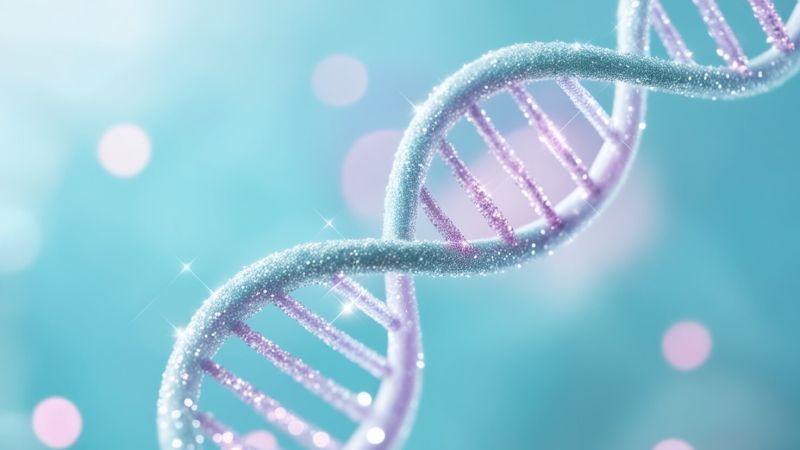
How NAD Helps Chronic Fatigue
Is NAD a potential answer for chronic fatigue? According to research, very likely.
Chronic fatigue is a complex and debilitating condition that affects millions of people worldwide. It is characterized by persistent and unexplained fatigue that is not relieved by rest. Individuals with chronic fatigue often experience a significant reduction in their ability to perform daily activities, impacting their overall quality of life. Managing chronic fatigue requires a multifaceted approach, including understanding the role of NAD in the body and its connection to this condition.

What is Chronic Fatigue?
Chronic fatigue, also known as chronic fatigue syndrome (CFS), is a long-term illness that affects multiple body systems. It is more than just feeling tired; it is a severe and persistent fatigue that lasts for at least six months. This debilitating condition can greatly impact a person’s quality of life, making even simple daily tasks feel overwhelming.
Living with chronic fatigue can be incredibly challenging. The constant exhaustion can leave individuals feeling drained and unable to participate in activities they once enjoyed. Simple tasks like getting out of bed or taking a shower can become monumental feats. The physical and mental toll of chronic fatigue can lead to feelings of frustration, isolation, and depression.
One of the most frustrating aspects of chronic fatigue is the lack of understanding surrounding its cause. Despite extensive research, scientists have yet to pinpoint a specific cause for this condition. It is believed to be a complex interplay of genetic, environmental, and immunological factors. This complexity makes it difficult to develop effective treatments and interventions.

Defining Chronic Fatigue Syndrome
Chronic fatigue syndrome is a complex disorder with no known cause. It is diagnosed based on the presence of specific symptoms and the exclusion of other medical conditions that could explain the fatigue. The exact mechanisms behind chronic fatigue syndrome are not fully understood, making it a challenging condition to manage.
Individuals with chronic fatigue syndrome often face skepticism and disbelief from others due to the lack of visible physical symptoms. This can further exacerbate the emotional toll of the condition, as they may struggle to find validation and support from those around them. Raising awareness1 and understanding about chronic fatigue syndrome is crucial to providing empathy and support to those living with this invisible illness.
Common Symptoms and Diagnosis
The symptoms of chronic fatigue syndrome can vary from person to person but typically include unexplained fatigue, post-exertional malaise, sleep disturbances, cognitive impairment, and autonomic dysfunction. These symptoms can be debilitating and significantly impact daily functioning. Unexplained fatigue is a hallmark symptom of chronic fatigue syndrome. It is not relieved by rest and can worsen with physical or mental activity. This persistent exhaustion can make it difficult to maintain employment, engage in social activities, and fulfill family responsibilities.
Post-exertional malaise is another common symptom experienced by individuals with chronic fatigue syndrome. It refers to a worsening of symptoms after physical or mental exertion. Even simple tasks like grocery shopping or attending a social gathering can lead to a severe increase in fatigue and other symptoms, often lasting for days or even weeks.
Diagnosing chronic fatigue syndrome involves ruling out other potential causes of fatigue through a thorough medical evaluation that includes blood tests, imaging studies, and assessment of symptoms. It is essential for healthcare professionals to carefully consider all possible explanations for fatigue and to provide a comprehensive evaluation to ensure an accurate diagnosis.
Living with chronic fatigue syndrome requires a multidisciplinary approach to management. Treatment options may include a combination of medication, lifestyle modifications2, and psychological support. Individuals with chronic fatigue syndrome need to work closely with their healthcare team to develop a personalized treatment plan that addresses their unique needs and symptoms.
While there is currently no cure for chronic fatigue syndrome, ongoing research, and advancements in medical understanding offer hope for improved management and quality of life for those living with this challenging condition.
The Science Behind NAD

Nicotinamide adenine dinucleotide (NAD) is a coenzyme found in all living cells and is involved in various biological processes, including energy production and DNA repair. NAD exists in two forms: NAD+ and NADH. NAD+ is the oxidized form, while NADH is the reduced form. Maintaining adequate levels of NAD+ is crucial for optimal cellular function.
When it comes to understanding the science behind NAD, it is important to delve into the intricate details of its functions and how it impacts the body. NAD plays a vital role in energy metabolism, acting as a coenzyme in the process of converting food into energy. It participates in redox reactions, transferring electrons between molecules and enabling ATP synthesis, the primary energy currency of cells. This means that without NAD, our cells would struggle to produce the energy needed for various physiological processes.
Furthermore, NAD is not only involved in energy production but also serves as a substrate for enzymes involved in DNA repair and gene expression regulation. These enzymes rely on NAD to carry out their functions effectively. DNA repair is essential for maintaining the integrity of our genetic material, preventing mutations, and ensuring proper cell division. Gene expression regulation, on the other hand, controls which genes are turned on or off, influencing various cellular processes and ultimately impacting our overall health.
The Function of NAD in the Body
NAD’s multifaceted role in the body highlights its significance in maintaining optimal cellular function. By acting as a coenzyme, NAD facilitates the conversion of food into usable energy through glycolysis, the citric acid cycle, and oxidative phosphorylation. These energy-producing pathways rely on NAD+ as a cofactor for various enzymes, ensuring the efficient breakdown of glucose and other nutrients to generate ATP.
Moreover, NAD’s involvement in redox reactions allows it to transfer electrons between molecules, playing a crucial role in cellular respiration. This process involves the transfer of electrons from NADH to the electron transport chain, ultimately leading to the production of ATP. Without NAD, this electron transfer would be disrupted, hindering ATP synthesis and compromising cellular energy levels.
In addition to its role in energy metabolism, NAD also serves as a vital component in DNA repair mechanisms. DNA damage can occur due to various factors, such as exposure to harmful UV radiation or chemical mutagens. To maintain genomic stability, cells rely on enzymes that utilize NAD as a substrate to repair damaged DNA. These enzymes recognize and correct errors in the DNA sequence, preventing the accumulation of mutations that could lead to diseases like cancer.
How NAD Levels Affect Energy Production
The impact of NAD levels on energy production cannot be overstated. When NAD+ levels decline, the energy-producing pathways mentioned earlier can be disrupted. This disruption can lead to decreased ATP synthesis and an overall reduction in cellular energy levels. As a result, cells may struggle to perform their essential functions, leading to fatigue, decreased physical performance, and impaired overall health.
Furthermore, low NAD+ levels can also affect other cellular processes that rely on energy, such as protein synthesis and cell signaling. Protein synthesis is crucial for building and repairing tissues, while cell signaling allows cells to communicate and coordinate their activities. Without sufficient NAD+, these processes may be compromised, leading to a cascade of effects that can impact various aspects of our health and well-being.
In conclusion, understanding the science behind NAD is essential for comprehending its vital role in the body. From energy production to DNA repair and gene expression regulation, NAD plays a multifaceted role in maintaining optimal cellular function. By ensuring adequate NAD+ levels, you can support your cells’ energy needs and promote overall health and well-being.
NAD and Chronic Fatigue: The Connection

“NADH helps your body make energy. Some people take it in supplement form to treat chronic fatigue syndrome.” (Adrienne Delwo, verywellhealth3, July 11, 2023)
Emerging research suggests a link between NAD and chronic fatigue. One potential mechanism is the impact of NAD on mitochondrial function.
The Impact of NAD on Mitochondrial Function
Mitochondria are often referred to as the “powerhouses” of cells because they generate the majority of the cell’s energy in the form of ATP. NAD+ is essential for mitochondrial function, as it is a key regulator of mitochondrial biogenesis and dynamics. It is also involved in the electron transport chain, which is responsible for ATP production.
Furthermore, NAD+ plays a crucial role in maintaining the balance between energy production and cellular repair. It acts as a cofactor for various enzymes involved in DNA repair and maintenance, ensuring the integrity of the mitochondrial genome. This is particularly important because mitochondrial DNA is more susceptible to damage compared to nuclear DNA due to its proximity to reactive oxygen species generated during ATP synthesis.
In addition to its role in ATP production and DNA repair, NAD+ also influences other mitochondrial processes. It regulates the production of reactive oxygen species, which are natural byproducts of cellular respiration. By maintaining the delicate balance of reactive oxygen species, NAD+ helps prevent oxidative stress, a condition characterized by an imbalance between the production of reactive oxygen species and the body’s ability to neutralize them. Oxidative stress can damage cellular components, including proteins, lipids, and DNA, leading to mitochondrial dysfunction and fatigue.
NAD Deficiency and Chronic Fatigue
Studies have shown that individuals with chronic fatigue syndrome may have lower levels of NAD+. NAD deficiency can impair mitochondrial function, leading to reduced ATP synthesis and decreased cellular energy. This energy deficit may contribute to the severe fatigue experienced by individuals with chronic fatigue.
Moreover, NAD+ depletion can disrupt the delicate balance of reactive oxygen species, tipping the scales towards oxidative stress. The resulting damage to mitochondrial components further exacerbates the energy deficit and contributes to the persistent fatigue observed in chronic fatigue syndrome.
Interestingly, NAD+ supplementation has shown promising results in alleviating fatigue symptoms in some individuals with chronic fatigue syndrome. By replenishing NAD+ levels, mitochondrial function can be restored, leading to increased ATP production and improved cellular energy. Additionally, NAD+ supplementation may help rebalance the production of reactive oxygen species, reducing oxidative stress and protecting mitochondrial integrity.
Further research is needed to fully understand the complex relationship between NAD, mitochondrial function, and chronic fatigue. However, the emerging evidence suggests that targeting NAD metabolism and mitochondrial health may hold promise as a potential therapeutic approach for individuals suffering from chronic fatigue syndrome.
Boosting NAD Levels for Chronic Fatigue Management
Enhancing NAD levels may be a potential strategy for managing chronic fatigue. Both natural and medical approaches can help increase NAD+ levels in the body.
Natural Ways to Increase NAD Levels
Several lifestyle factors can influence NAD+ levels. Regular exercise, a well-balanced diet, and adequate sleep have been shown to support NAD+ production. Certain foods, such as dairy products, fish, and nuts, contain precursors to NAD+ synthesis, including niacin and tryptophan. Additionally, some dietary supplements, such as nicotinamide riboside, have been found to boost NAD+ levels.
Medical Treatments to Enhance NAD Production
In certain cases, medical interventions may be necessary to increase NAD+ levels. NAD+ precursors, can be taken as supplements to support NAD+ synthesis. However, consulting with a healthcare professional before starting any supplementation regimen is essential to ensure safety and efficacy.
Potential Risks and Considerations
While increasing NAD+ levels may hold promise for managing chronic fatigue, it is important to consider potential risks and side effects.
Side Effects of NAD Supplementation
NAD+ supplementation is generally well-tolerated, but some individuals may experience side effects such as flushing, dizziness, or gastrointestinal disturbances. It is crucial to speak with a healthcare professional before starting any new treatment to discuss the potential risks and benefits.
When to Consult a Healthcare Professional
If you are experiencing chronic fatigue or suspect you may have chronic fatigue syndrome, it is recommended to consult with a healthcare professional for an accurate diagnosis and appropriate management plan. They can help determine whether NAD+ augmentation may be a suitable option for you and provide guidance on lifestyle modifications and other treatment strategies.
Conclusion
In conclusion, understanding the role of NAD in managing chronic fatigue is a critical step in addressing this challenging condition. NAD plays a crucial role in energy production and mitochondrial function, both of which are closely linked to the symptoms experienced by individuals with chronic fatigue. By exploring natural ways to increase NAD levels and considering medical interventions, individuals with chronic fatigue may find relief and improved quality of life. Consulting with a healthcare professional is essential to develop a personalized management plan that considers individual needs and considerations. Begin increasing NAD levels in the body to boost energy and improve sleep quality. Accuri® Vitality ↑® NAD+ Booster is a groundbreaking NAD supplement.
Lastly, if you’re interested in going deeper on health-related content, here are a few of our recent posts that you may want to read:
- Why Muscle Is Your Biggest Alley in the Anti-Aging Strategy
- The 24 Hottest Biohacking Trends in 2024
- NAD Optimization: Real People, Real Results
- 9 Powerful Benefits of Optimizing Your NAD
Referenced Sources:
Read More














